
Spring Security and Angular
Dave Syer, 2016@david_syer
Agenda
- Really quick introduction to Spring Security, Spring Session, Angular JS
- Focus on features to build secure, modern, single-page applications
- High level view of sample apps presented in tutorial (from blog series)
- More detailed look at some features of the apps
Most Valuable Links
Spring Security
- Generic,
Filterbased solution for Servlet applications - Authentication (a.k.a. identity) and Authorization (a.k.a. access decisions)
- OAuth2 module useful for SSO and token-based API authentication
- lots of other features
- http://projects.spring.io/spring-security
Angular JS
- JavaScript framework
- "Magic" binding (dependency injection and MVC)
- Has a lot of traction in the enterprise
- Nothing about the architecture of the apps presented here requires Angular JS
- Really basic usage in samples, but representative
Security Features in Modern Browers
- HTTP Basic
- X.509 authentication
- Kerberos
- Cookies
- CORS (Common Origin Resource Sharing)
- HSTS (HTTP Strict Transport Security)
- CSP (Content Security Policy)
Sub-text: "use them, they’re reliable and free".
Spring Session
- Not tied to Spring Security, but works well with it
- Easy, declarative, distributed sessions
- Redis works out of the box, other backends easy to add
- Servlet
Filter - http://projects.spring.io/spring-session
Spring Cloud
- Toolbox for building distributed systems (a.k.a. microservices)
- Most relevant pattern here is Gateway (a.k.a. reverse micro-proxy)
- Also useful for configuration management, service discovery, load balancing, circuit breaker, etc.
- http://cloud.spring.io
Basic Sample

(c.f. "basic": https://github.com/…/basic, Part I)
A Single Page Application
index.html
<html>
...
<body ng-app="hello">
<div class="container">
<h1>Greeting</h1>
<div ng-controller="home as home" ng-cloak class="ng-cloak">
<p>The ID is: {{home.greeting.id}}</p>
<p>The content is: {{home.greeting.msg}}</p>
</div>
</div>
<script src="js/angular-bootstrap.js" type="text/javascript"></script>
<script src="js/hello.js"></script>
</body>
</html>Completely Minimal JavaScript
hello.js
angular.module('hello', [])
.controller('home', function($http) {
var self = this;
$http.get('/resource/').then(function(response) {
self.greeting = response.data;
})
}
);Add HTTP Basic Security
With Spring Boot you get a secure application out of the box, but it is easy to customize for a custom user details store (e.g. directory).
pom.xml
<dependency>
<groupId>org.springframework.boot</groupId>
<artifactId>spring-boot-starter-security</artifactId>
</dependency>or build.gradle
dependencies {
compile('org.springframework.boot:spring-boot-starter-security')
}Basic Sample with Authentication
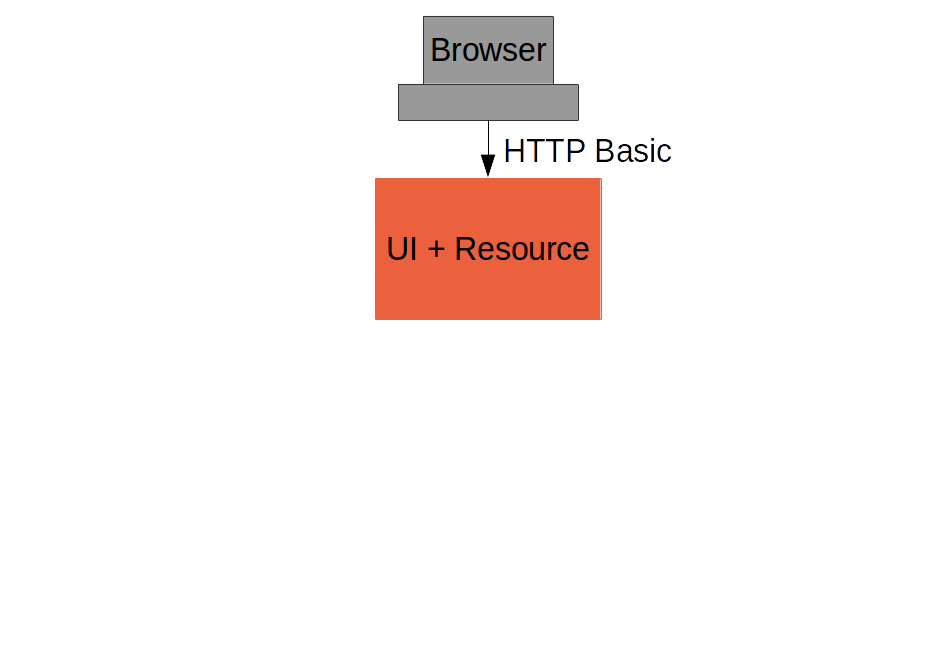
Spring Security: Login Form
To be able to add a login form to the app we need to make some HTML static resources accessible anonymously
@Configuration
public class SecurityConfiguration extends WebSecurityConfigurerAdapter {
@Override
protected void configure(HttpSecurity http) throws Exception {
http
.httpBasic()
.and()
.authorizeRequests()
.antMatchers("/index.html", "/home.html",
"/login.html", "/").permitAll()
.anyRequest().authenticated();
}
}(c.f. "single": https://github.com/…/single, Part I)
Suppress the Browser Dialog
- When the browser gets a 401 with "WWW-Authenticate: Basic …" it pops up a dialog.
- Spring Security sends that header unless it sees "X-Requested-With" in the request.
So:
angular.module('hello', []).config(function($httpProvider) {
$httpProvider.defaults.headers.common["X-Requested-With"] = 'XMLHttpRequest';
})
...Client Side Login Form
<form role="form" ng-submit="controller.login()">
...
</form>self.credentials = {};
self.login = function() {
$http.get('/user', {
headers : { authorization : "Basic "
+ btoa(self.credentials.username
+ ":" + self.credentials.password)
}}).then(function(response) {
self.greeting = response.data;
self.show = false;
})
}- The
login()function sends HTTP Basic credentials and checks the "/user" endpoint. - Subsequent requests are authenticated by a cookie - standard Spring Security and browser behaviour
Login Form Summary

(c.f. "single": https://github.com/…/single, Part II)
Cross Site Request Forgery (CSRF)
- Spring Security and Angular JS have good support for CSRF protection
| To Client | Name | From Client | Name | |
|---|---|---|---|---|
Spring Security |
Request attribute |
_csrf |
Request header |
X-CSRF-TOKEN |
Angular JS |
Cookie |
XSRF-TOKEN |
Request header |
X-XSRF-TOKEN |
- They don’t talk to each other by default
Spring Security for Angular "XSRF"
@Configuration
public class SecurityConfiguration extends WebSecurityConfigurerAdapter {
@Override
protected void configure(HttpSecurity http) throws Exception {
http
...
.and()
.csrf()
.csrfTokenRepository(CookieCsrfTokenRepository.withHttpOnlyFalse());
}
}Add Resource Server
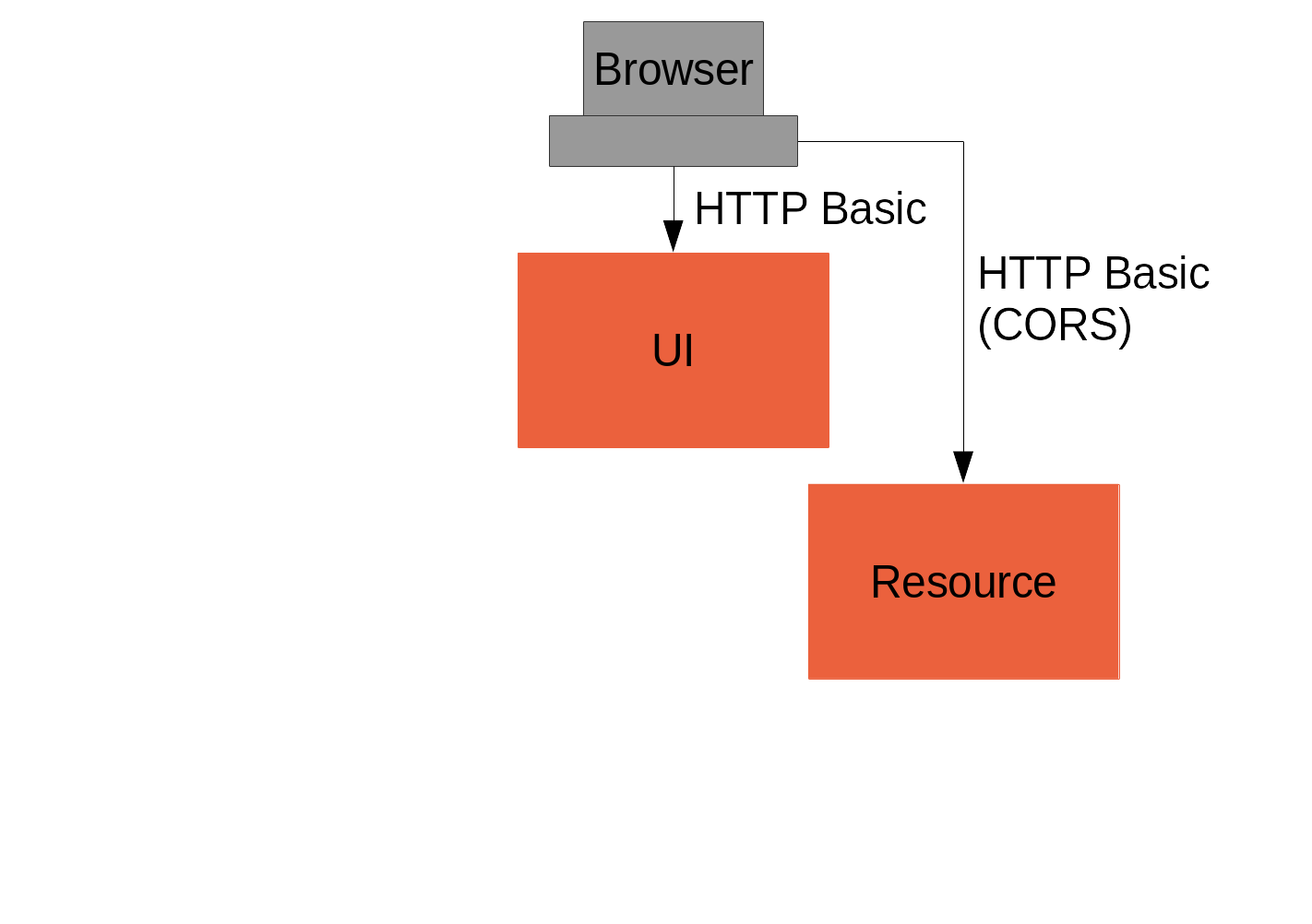
(c.f. "vanilla": https://github.com/…/vanilla, Part III)
CORS
Use @CrossOrigin on your @RequestMapping and this:
public class ResourceApplication extends WebSecurityConfigurerAdapter {
@Override
protected void configure(HttpSecurity http) throws Exception {
http.cors()
...
}
there is also CorsUtils::isCorsRequest method you can use in a
request matcher.
|
Add Spring Session
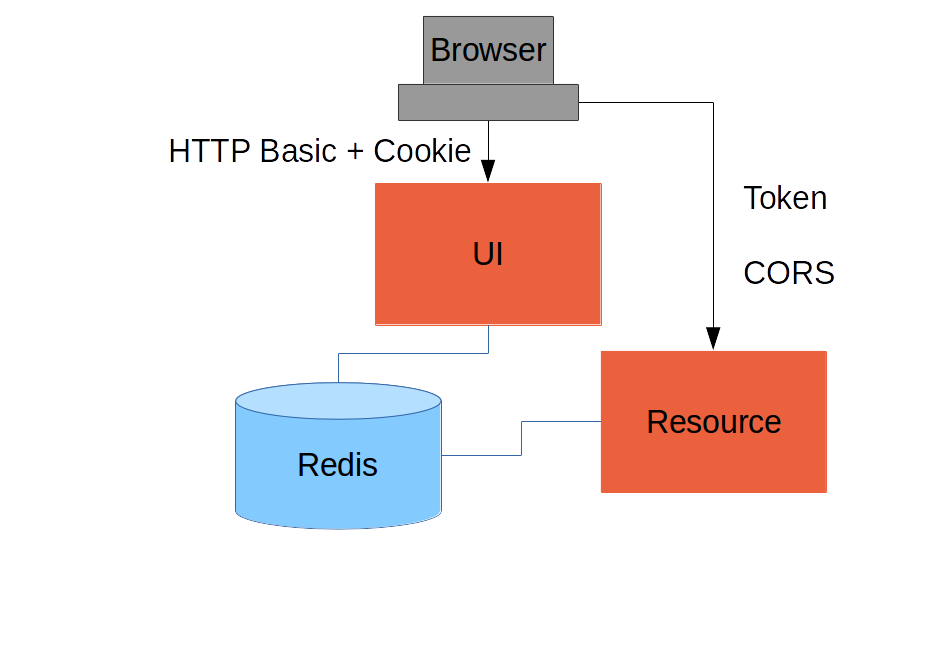
(c.f. "spring-session": https://github.com/…/spring-session, Part III)
Add Gateway

(c.f. "proxy": https://github.com/…/proxy, Part IV)
Externalize Authentication (SSO)
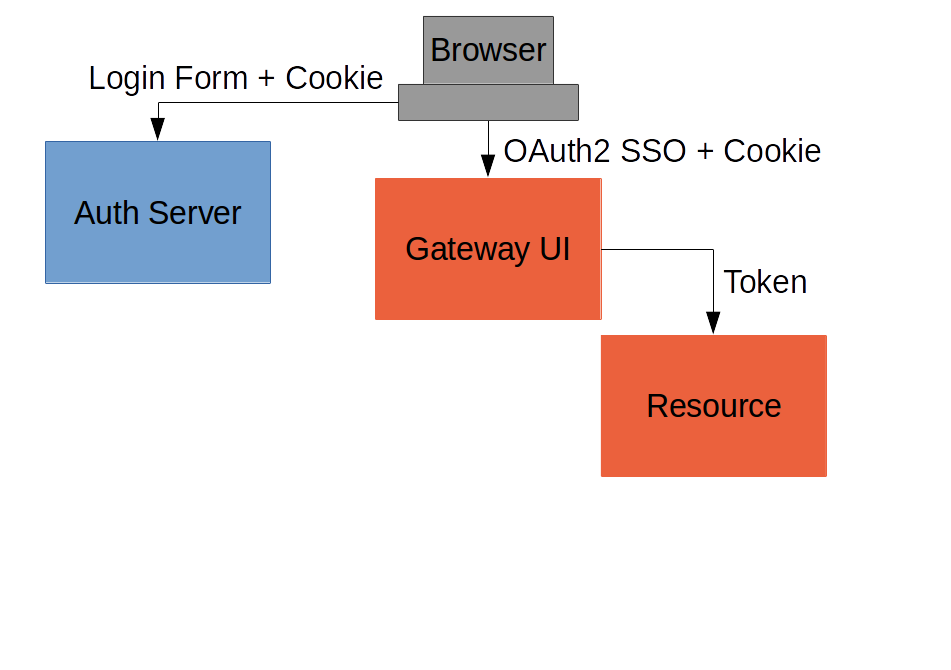
(c.f. "oauth2": https://github.com/…/oauth2, Part V)
Push UI Below Gateway
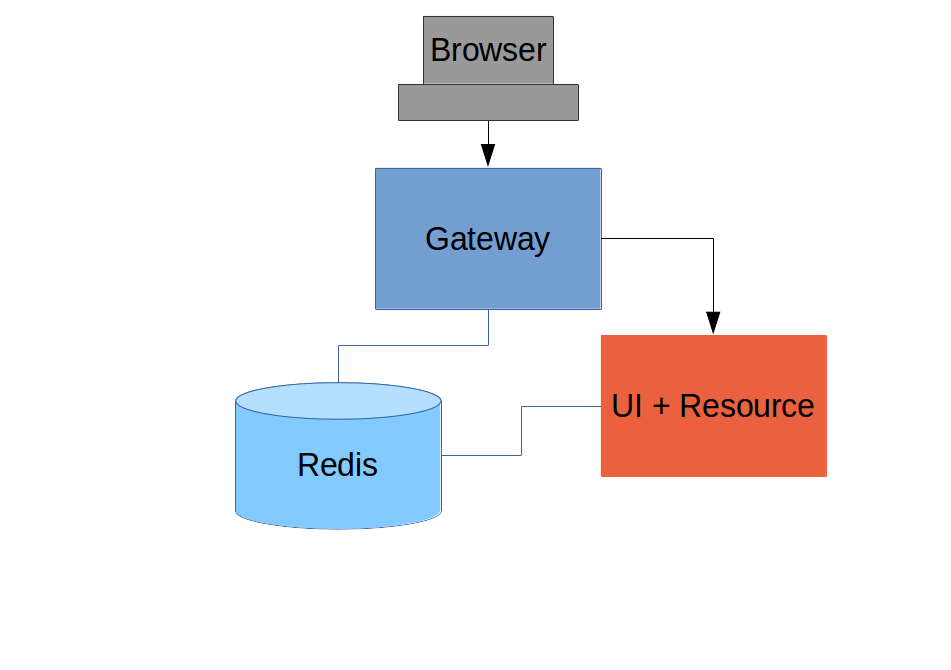
Add Resource Server
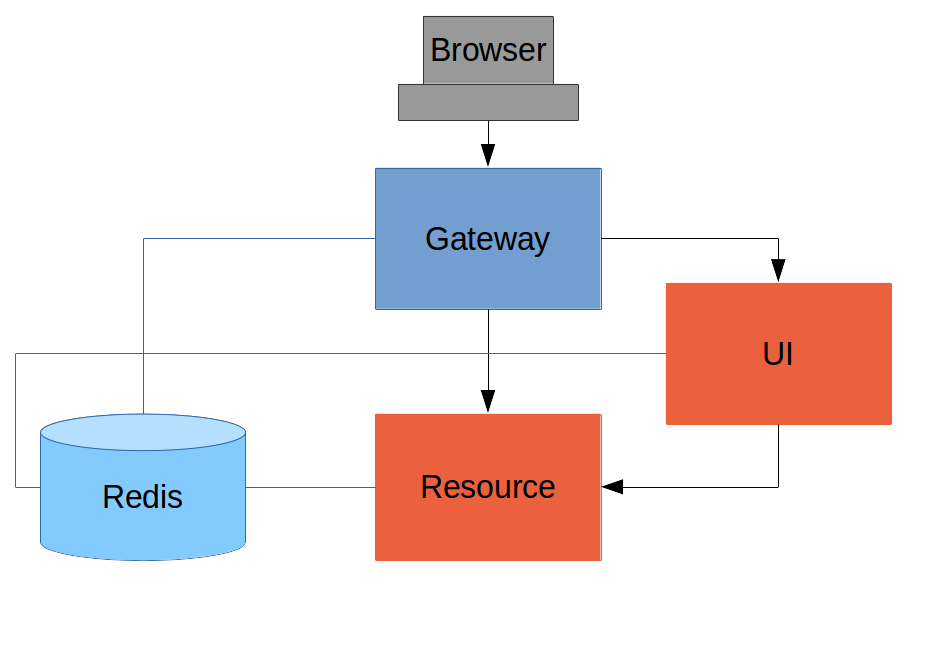
Full "Double" Sample
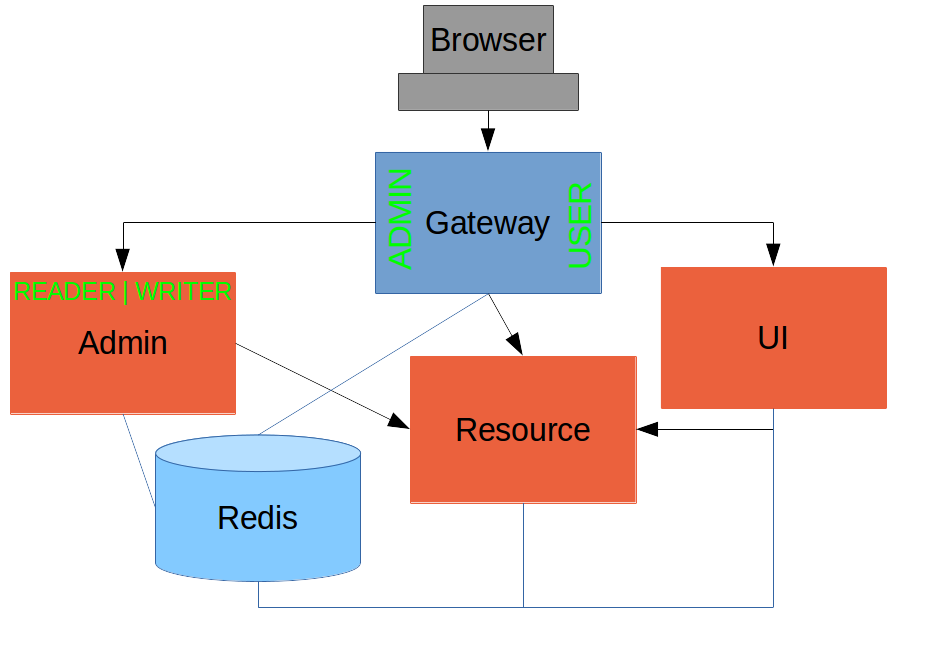
(c.f. "double": https://github.com/…/double, Part VI)
Overview of Sample Apps
Imagine several physical implementations of the same system with an identical Javascript client (single page application) and a secure back end. Application and security architecture variations:
| Application | Description | Security | Blog |
|---|---|---|---|
|
Single backend |
HTTP Basic |
Part I |
|
Adds form authentication |
Session cookie |
Part II |
|
Adds secure backend with custom token |
Spring Session ID as token |
Part III |
|
UI acts as proxy. |
Session cookie, Spring Session |
Part IV |
|
Add OAuth2 SSO with a separate authentication server |
Session cookie in UI and access token for backends |
Part V |
|
Add "admin" UI behind Gateway |
Session cookie, Spring Session |
Part VI |
Links
- http://presos.dsyer.com/decks/spring-security-angular.html
- http://spring.io/guides/tutorials/spring-security-and-angular-js/
- http://spring.io/guides/topicals/spring-security-architecture/
- http://github.com/spring-guides/tut-spring-security-and-angular-js
- http://github.com/spring-projects/spring-security-oauth
- http://cloud.spring.io/spring-cloud-netflix (for
@EnableZuulProxy) - Twitter: @david_syer
- Email: dsyer@pivotal.io
/